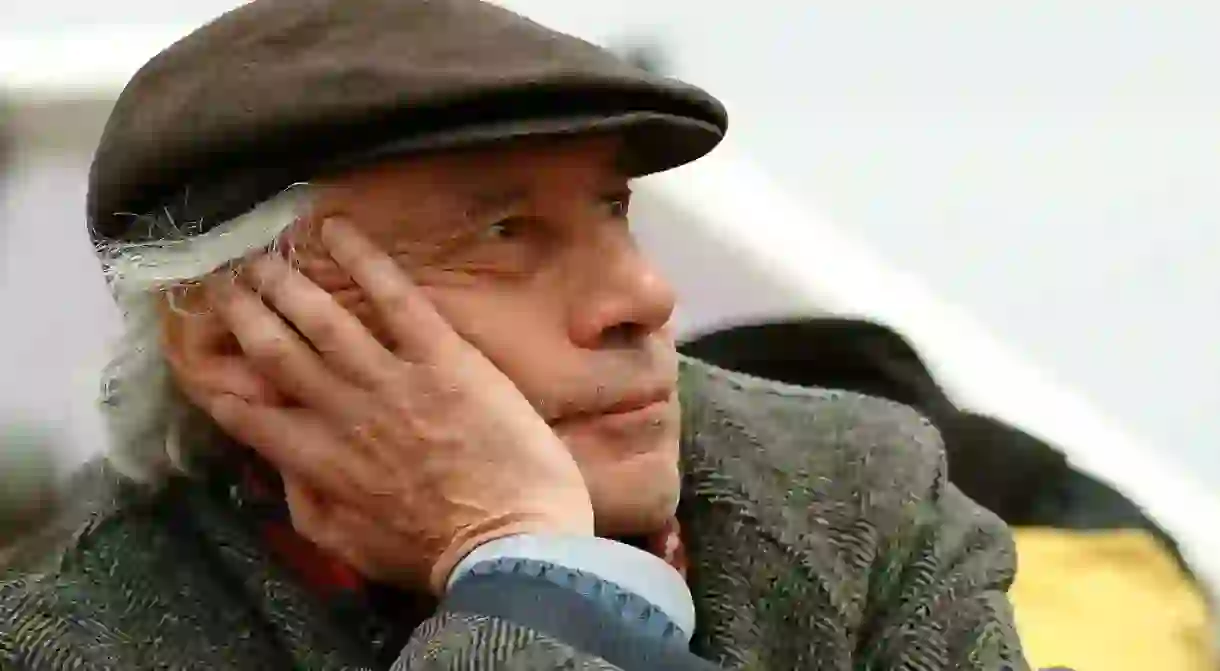Jacques Rivette: Five Decades Of (Incredibly Long) Films

Jacques Rivette never enjoyed the same kind of fame as fellow New Wave directors François Truffaut and Jean-Luc Godard but he remains, nonetheless, a giant of French cinematic history. Over 50 years, he produced 28 movies characterized by their originality, mystery, and uncompromising length. Rivette, who retired in 2009, died as a result of Alzheimer’s disease on January 29, 2016. His underappreciated work is well worth the investment of time and brainpower it demands.
Rivette made his first short film, Aux Quatre Coins (In All Four Corners, 1949) at age 21. He hoped to enroll at the Institut des Hautes Études Cinématographiques in Paris but, rejected, he instead self-educated with screenings at the Cinémathèque Française. There, he met Éric Rohmer who got him a job at the Gazette du Cinéma. This led him to the Cahiers du Cinéma journal, out of which the French New Wave blossomed, an attempt by its young critics to challenge traditional filmmaking. Along with Truffaut’s Les Quatre Cents Coups (The 400 Blows, 1959) and Godard’s À Bout de Souffle (Breathless, 1960), Rivette’s Paris Nous Appartient (Paris Belongs to Us, 1960) was a defining early film of the movement.

The film follows a group of amateur actors staging a performance of Shakespeare’s Pericles in a deserted summertime Paris, only to find themselves gripped by paranoia following a tragic suicide. It introduced key Rivettean motifs: theatrical rehearsals, young women investigating mysteries, and conspiracy theories. The first of these enables Rivette to explore the creative process (the finished product was of little interest to him) and his debut feature, which took years to produce due to limited funds, is an embodiment of this struggle.
The mise en abyme play-within-a-film device returns with L’Amour Fou (Mad Love, 1968), in which a theater group rehearses Racine’s Andromaque while being filmed by a television crew. Other crucial aspects of his filmmaking are evident in the extensive use of improvisation and its four-hour runtime. The interplay of theater and life also features in L’Amour par Terre (Love on the Ground, 1984), La Bande des Quatre (The Gang of Four, 1988), and Va Savoir? (Who Knows?, 2000) .

Rivette also drew from literature. His second feature, La Religieuse (The Nun, 1965), is based on a 1760 novel by Denis Diderot. In 18th-century France, a young woman is essentially imprisoned in an abusive convent. Initially banned for its perceived anti-clericalism, the cruelty of the church is more likely a metaphor for that of life. Adaptations of Honoré de Balzac followed with La Belle Noiseuse (The Beautiful Troublemaker, 1991), loosely based on the short story Le Chef-d’œuvre Inconnu (The Unknown Masterpiece, 1831), and Ne Touchez Pas la Hache (Don’t Touch the Axe, 2007), a faithful retelling of the novel La Duchesse de Langeais. The former won the Grand Prix at the Cannes Film Festival.
The most extreme of Rivette’s films in terms of length (few are under two-and-a-half hours) was Out 1 (1971) which follows parallel rehearsals of two plays by Aeschylus. It has a total runtime of 12 hours and 40 minutes. A version one-third the length was also produced entitled Out 1: Spectre (1973). For Rivette, as the film doesn’t attempt to reach a conclusion, it could have run forever.
The least demanding of Rivette’s films is Céline et Julie Vont en Bateau (Céline and Julie Go Boating, 1974). The story of two girls, a magician, and a librarian trapped in the theatrical melodrama of a suburban house is a comic meditation on the nature of fiction. It employs new forms of improvisation, ellipsis, and narrative experimentation. Two years later, Rivette suffered a nervous breakdown due to overwork on his four-film project Scènes de la Vie Parallèle. He would finish the third installment, L’Histoire de Marie et Julien (The Story of Marie and Julien, 2003) 27 years later.

Other notable works include the two-part Jeanne la Pucelle (Joan the Maiden, 1994), a politically and socially focused look at the Joan of Arc legend and Secret Défense (Top Secret, 1998), the gripping story of a young scientist investigating her father’s death which draws on Greek myths and Alfred Hitchcock movies. His final film, 36 Vues du Pic Saint-Loup (Around a Small Mountain, 2009), a bittersweet romance about a traveling circus and the passage of time, was his shortest, at just 84 minutes.
In The New York Times in 2008, Rivette said of his parting cinematic surprise that ‘[i]t should not be that every filmmaker makes the films you expect of them… I’d prefer to make nothing than make something that’s like my other films.’ On his death, the French culture minister, Fleur Pellerin, described him as a filmmaker ‘of intimacy and loving impatience.’ While watching even a fraction of his oeuvre requires substantial patience, it will reward any lovers of cinema who do.













